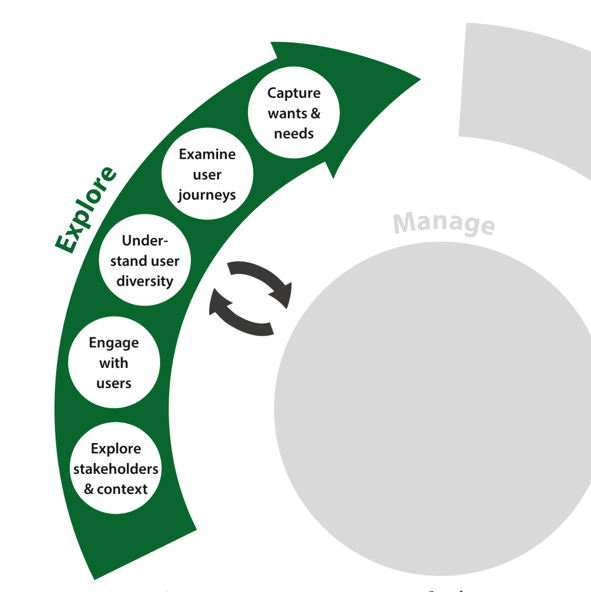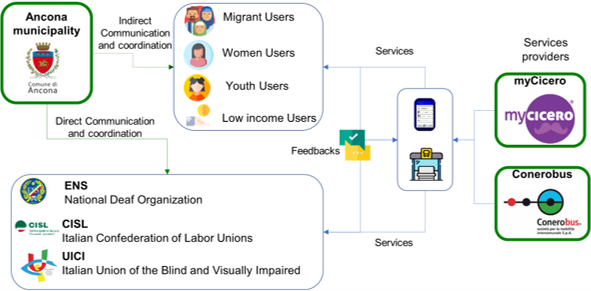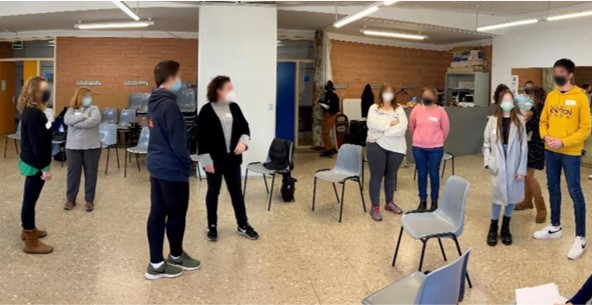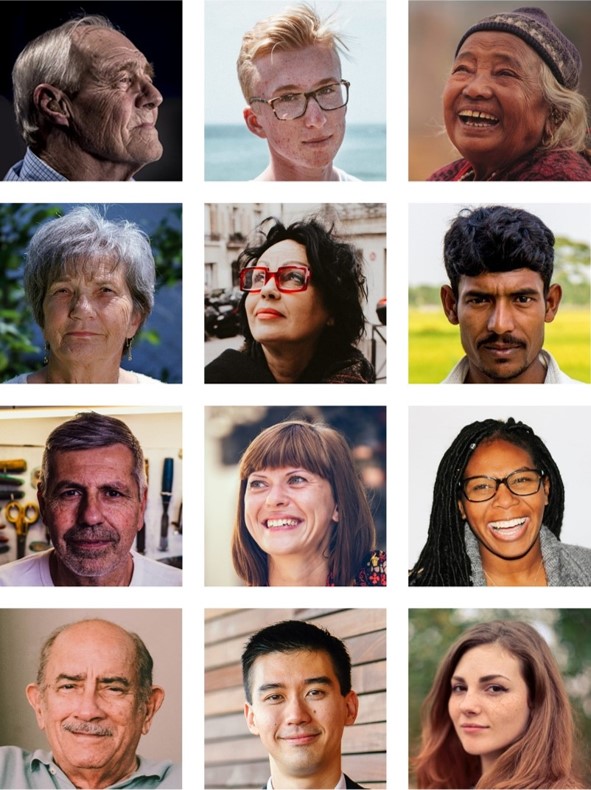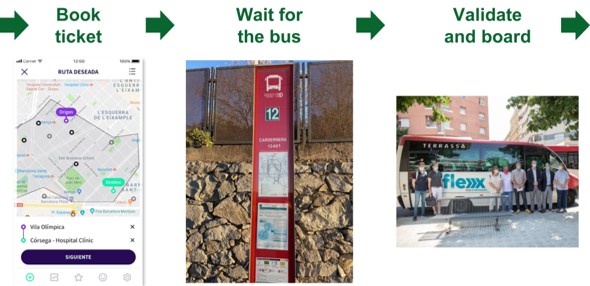The Explore phase is about gaining a deeper understanding of the design problem and the wider context in which the product or service will operate. This enables a better understanding of the criteria that the project needs to fulfil and helps to ensure that the resultant product or service meets the right needs. This phase involves exploring the needs of all the stakeholders. These include the end-users but also all who have something to gain or lose from the product or service.
This page describes the activities within the Explore phase of the Inclusive Design Wheel, and explains how they apply to inclusive design of transport services.
On this page:
Explore activities answer the question ‘What are the needs?’. View full map.
Explore stakeholders & context
This activity involves creating a stakeholder map and examining the wider context in which the solutions will function. This helps later on in the Capture wants & needs activity to ensure that the full range of needs are considered.
A stakeholder map is a list or diagram of the different players who have something to gain or lose from the project. Its purpose is to show all the key players who will contribute to the project being successful. Missing the needs of any of the stakeholders could result in the project failing. A stakeholder map helps to identify all the different stakeholders across the development, use and support of the service, understand the relationships between them and assess their influence and interest in the project.
Within transport service design, stakeholders are likely to include end users, user organisations, transport staff, service providers, equipment suppliers, infrastructure providers and local and national authorities. There may also be additional stakeholders that are specific to the project.
It is also important to examine the wider context in which the solutions will function as this will affect whether the solutions will work in practice. Examples of the wider context include infrastructure and environment, other parts of the transport system and government and local authority policy and regulations. It is also important to be aware of trends and planned changes, so that solutions keep working longer-term. For example, a move towards zero emissions policies will affect which transport modes are cost-effective.
Example of a stakeholder map from one of the DIGNITY pilot projects (Ancona). More examples like this are available within the Inclusive design log for transport.
Further information and resources
Other DIGNITY resources:
- Project teams that are using the DIGNITY toolkit may find that the self-assessment framework is a good starting point for identifying stakeholders in the area or region. However, additional work is needed to identify all of the stakeholders that are relevant to each individual project.
- Project teams that have done the scenario building process in the DIGNITY toolkit can refer to the scenarios to help them understand the likely future landscape for transport.
Stakeholder maps are commonly used in other domains, such as project management. The guidance and examples from these domains can also be helpful in inclusive design. For example:
- The Mind Tools website has a section on Stakeholder Analysis with more detailed guidance on creating a stakeholder map and some examples of stakeholder groups to consider.
- The website stakeholdermap.com also provides detailed advice on stakeholder mapping and analysis.
Engage with users
Engaging with end users throughout the development process is critical for delivering successful inclusive solutions. Engaging with users goes beyond user testing, it’s about involving users across all three of the Explore, Create and Evaluate phases, and in early iterations as well as later ones. See the page about co-design for more detail.
In the Explore phase, engaging with users helps to identify what users actually want and need. This helps the design team to address the real issues rather than focusing time and effort on unnecessary things. In this phase, user engagement may involve methods such as:
- User observation
- Contextual inquiry
- Diary methods
- Focus groups
- Interviews
- Questionnaires
Whenever users are involved, the page about ethical considerations will be relevant (e.g consent, privacy and GDPR).
User observation is particularly important for discovering what people really want, what they really need, and what they really do. This is because people often struggle to clearly articulate their real needs due to poor awareness of their own habits and practices.
Methods for engaging with users can create lots of photos, videos and text content. The subsequent activities of Understand user diversity, Examine user journeys and Capture wants & needs help to structure and refine this information in order to inform the remainder of the design and development process.
Example showing one of the DIGNITY pilot projects (Barcelona) engaging with users. More examples like this are available within the Inclusive design log for transport.
Further information
- The customer journey mapping method in the DIGNITY toolkit combines user observation and interviews to gather information about users’ experiences of their current journeys.
- The UsabilityNet website has sections on various methods for involving users in the design process including interviews, contextual inquiry, user observation and focus groups. It includes information on planning and running each of these methods.
- Holtzblatt and Beyer(2016)’s book ‘Contextual Design (2nd edition)’ provides information on Contextual Inquiry. This method involves interviewing users in the context in which they would use the product. (Published by Morgan Kaufmann).
Understand user diversity
Understanding the diverse range of users is essential for developing an inclusive service. To develop this understanding, it is important to consult population-level data that covers the whole range of people in the target user group.
The DIGNITY surveys offer one freely-available source of such data. These surveys were conducted as part of the DIGNITY project. They provide data on various factors that affect digital mobility exclusion, including technology access, use and competence, use of digital mobility services and attitudes towards technology. The German DIGNITY survey is particularly valuable because its sampling strategy and large sample size (over 1000) mean that it’s population-representative.
Other publicly available survey data may also be useful. For example, many governments conduct regular surveys covering topics such as internet access and transport use.
One way of using survey data is to develop personas based on the data. Care should be taken to ensure that the personas represent the diverse range of users. Such personas can be effective at inspiring the team to empathise with the users, focus on user needs and keep the diversity of the population in mind throughout the design process. An example set of digital personas was developed from the UK Digital Exclusion Survey, which was the precursor to the DIGNITY surveys. This set shows how digital experience, digital interface competence and attitudes towards technology vary within the UK population.
An example set of digital personas is available from the Digital Personas page of this toolkit.
Examine user journeys
A user journey is a step-by-step description of a user’s interaction with a product or service. It may also describe what the user does immediately before and after using the product or service, as this provides some context of use. It should consider activities such as planning a journey, purchasing a ticket, using the transport service for the first time and dealing with difficulties, as well as ‘normal’ use. User journeys help the design team to understand the user experience and help to ensure that list of wants & needs is complete.
User journeys should ideally be constructed by observing users (see Engage with users above). The journeys can be described by writing down each user action and are further enhanced by the addition of photographs.
When specifying a particular user journey it is important to record any assumptions. These include assumptions about the product or service, the users, their goal, their initial location, and the initial state of anything that would affect the user journey.
Example showing part of the user journey from one of the DIGNITY pilot projects (Barcelona). More examples like this are available within the Inclusive design log for transport.
Further information
- The customer journey mapping method in the DIGNITY toolkit combines user observation and interviews to gather information about user journeys.
- Kirwan and Ainsworth (1992)’s book ‘A guide to task analysis’ describes Task analysis. This is one method of examining user journeys in terms of the tasks that user performs in order to use the product. (Published by CRC Press)
- The UsabilityNet website has a section on Task analysis, which gives further information on this method.
Capture wants & needs
Describing the wants and needs of users and other stakeholders presents the information gathered within the Explore phase, in a manner that makes it more easy to apply within the Create phase.
Wants are used here to refer to metrics that the stakeholders would like, which can be used to judge whether one solution is better or worse than another, from that person's perspective. For example
- As a user I would like live information screens at the bus stop, showing when the next bus will arrive, so that I have confidence that the bus is coming, and can find out if there are any delays.
- As a low-income user I would like special discounts for travelling, so that I will not be excluded by my monetary situation.
- As a bus driver I would like an automated way of enabling wheelchair users to independently board my bus, so that I don't have to get out of my seat and set up a ramp for them.
Needs are used here to refer to 'deal breaker' things that the stakeholders require, because otherwise the solution is not viable, from that person's perspective. For example
- As a non-smart phone user I need to make bookings without using an app or else I won't be able to make bookings (because I don't install apps).
- As a blind user I need an information and booking system that is compatible with screen reader technologies or else I cannot use the service.
- As a bus manufacturer I need to know the kerb-height of all the bus stops or else I can't design a kneeling suspension system for level access.
The wants and needs of different user and business stakeholders may be conflicting. Referring to the project aims/objectives (described within the page about Manage) may help to prioritise and resolve these conflicts.
More example of wants & needs are available within the Inclusive design log for transport.}}
Further information
- An online article What the heck are we building? 10 steps to successful requirements gathering describes some of the principles behind requirements gathering. This is closely related to building a needs list. (Published by Phase2)
Feedback
We would welcome your feedback on this page:
Privacy policy. If your feedback comments warrant follow-up communication, we will send you an email using the details you have provided. Feedback comments are anonymized and then stored on our file server. If you select the option to receive or contribute to the news bulletin, we will store your name and email address on our file server for the purposes of managing your subscription. You can unsubscribe and have your details deleted at any time, by using our Unsubscribe form. If you select the option to receive an activation code, we will store your name and email address on our fileserver indefinitely. This information will only be used to contact you for the specific purpose that you have indicated; it will not be shared. We use this personal information with your consent, which you can withdraw at any time.
Read more about how we use your personal data. Any e-mails that are sent or received are stored on our mail server for up to 24 months.


